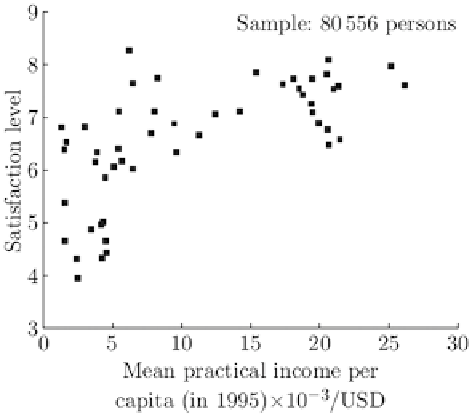Environmental Engineering Reference
In-Depth Information
Fig. 3.8
Relation between
satisfaction and income per
capita. (Frey and Stutzer
2001
)
3.3
Relationships Between Economic Growth and
Happiness
If there are limits in the extent to which we can grow within a sustainable future, we
need to think again about the economic models which drive our increasing demands
for raw materials and energy. At present, the aim of most economists and politicians
is to increase the GDP of the national economy which leads to ever-increasing en-
ergy and material consumption which is not compatible with a sustainable society.
Thus some researchers have started to ask the question of what are society's real
aims. Frey and Stutzer (
2001
) investigated the relation between economic growth
and happiness and obtained the interesting results on this relationship which are
shown in Fig.
3.8
which expresses the relationship between satisfaction level and
income per capita. Although considerable scattering is observed in the results, there
can be seen two relationships between satisfaction level and income: one is a linear
relationship at low income levels; the other is weak or zero dependence at higher
income levels.
Looking at just the USA, the annual change in GDP per capita and mean personal
happiness are plotted in Fig.
3.9
; this shows that while GDP per capita increases 2.5
times since 1946, happiness does not increase at all. A similar tendency can be seen
in the case of Japan as seen in Fig.
3.10
; which is consistent with the lack of correla-
tion between happiness and income at the higher income levels in Fig.
3.8
. The rea-
sons for such tendencies need to be understood because it rather undermines much
of the rationale for economic growth; moreover the role of science and engineering
is often described as to enrich the life of people, and GDP increase is commonly
used as the measure of the extent to which peoples' lives have been improved.

